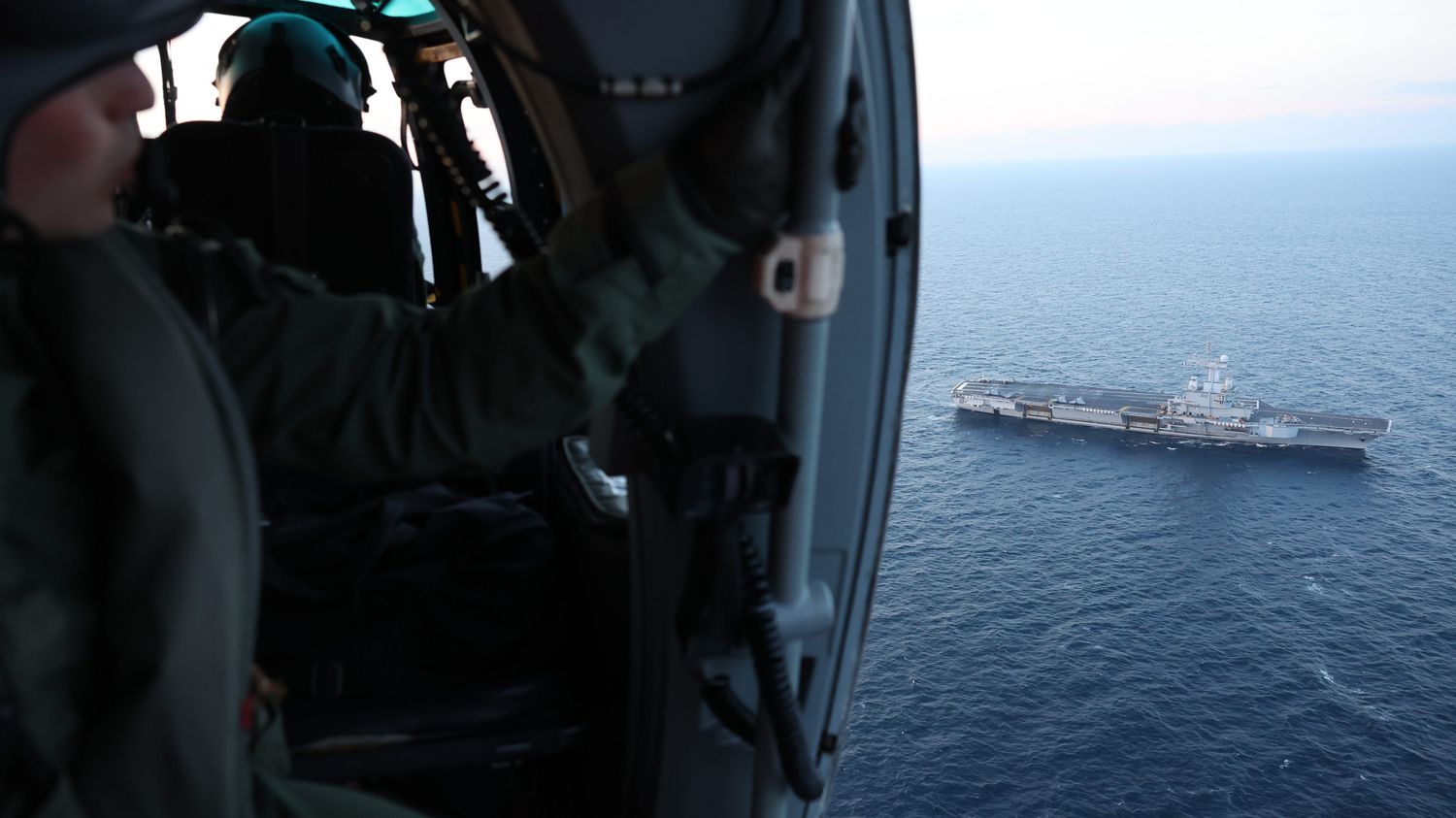Off the coast of Greece, the flagship of the French navy has been carrying out exercises for several weeks in a tense international context.

Published
Reading time: 4 min

The nuclear aircraft carrier “Charles-de-Gaulle” can cover up to 1,000 kilometers per day in a deafening noise. On its deck, 260 meters long and 65 meters wide, a “HawkEye” watch plane and around ten Rafale combat planes are preparing to take off one after the other.
Corvette Captain Stéphane explains to us how catapults work, a device which is used to give the plane enough speed to allow it to take off over a very short distance: “On the front axle, there is a small bar which will hang on, as if you were pulling a ball of paper with an elastic band. We will admit steam at high pressure into this catapult, which will pull the The aircraft then goes from 0 to 250 km/h.
The catapult exercise is well-established. But the most delicate maneuver remains the landing, a landing with great precision, at more than 200 km/h in the open sea, before catching a cable which suddenly brakes the plane.
“To impact an area 20 meters long and which contains two nuclear power plants, 2,000 people, an ammunition depot, a gasoline depot, it’s explosive.”
Lieutenant Commander Justin, Director of Landing Officersat franceinfo
“You have to master the exercise”, confirms Lieutenant Commander Justin, director of landing officers. The fighter planes appear 15 to 18 seconds one after the other. A unique aerial ballet. “The strength of the ‘Charles-de-Gaulle’ is first and foremost its crew, underlines Georges-Antoine Florentin, the aircraft carrier commander. It is thanks to him that this great machine can function so that, when the day comes, it can win the battle at sea or be able to project power towards land.
The aircraft carrier “Charles-de-Gaulle” returned to sea at the start of the year, after an eight-month technical shutdown, and has been carrying out operations in the Mediterranean since April 22 as part of the Akila mission. For two weeks, he spent two weeks under NATO operational control. A real demonstration of force and signals sent to Vladimir Putin’s Russia, like this mission carried out by two Rafale planes, leaving from the “Charles-de-Gaulle” off the coast of Greece to fly over the Baltic Sea very close to the Kaliningrad enclave, a small Russian territory wedged between Lithuania and Poland. “It was May 9, a six-hour flight from the Ionian Sea to the Baltic Sea, says Frigate Captain Erwan, one of the two pilots. It was of the order of a thousand nautical miles traveled there and back, so a total flight of almost 4,000 km, to show that we were capable of striking at a precise time.”
A coordinated strike simulation carried out by gusts that had to be refueled in flight. A way of showing muscles to reassure NATO partners and discourage those that Rear Admiral Jacques Mallard calls competitors, in other words the Russians and their allies.
“It is a dissuasive behavior to be able to convince those who could have hostile intentions towards us that it would cost them very dearly.”
Jacques Mallard, rear admiralat franceinfo
The mission of the “Charles-de-Gaulle” continues with, in the coming days, the Mare Aperto exercise, a simulated naval battle against several dozen boats and planes of the Italian navy.
